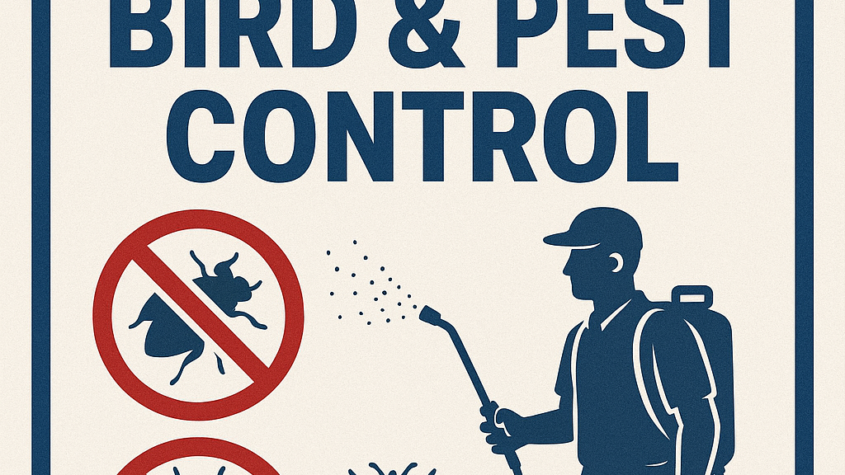
Rats pose a significant challenge for urban areas like Vancouver, where their presence can lead to health risks and property damage. Effective rat control Vancouver involves a combination of preventive measures and professional pest management strategies. Understanding the habits and behaviors of these pests is key to developing an efficient control plan.
Homeowners and business operators often underestimate the importance of maintaining cleanliness and securing food sources to deter rats. Regular inspections and proper waste disposal can greatly reduce attraction points. They must also be aware of the signs of an infestation, such as droppings and gnaw marks, which can help initiate timely action.
For those dealing with a rat problem, seeking expert help is advisable. Professional pest control services can tailor solutions based on the specific needs of the property, ensuring comprehensive removal and prevention methods. With the right approach, a rat-free environment is achievable.
Understanding Rat Infestations in Vancouver
Vancouver’s urban environment can create ideal conditions for rat infestations. Recognizing the signs of their presence, understanding common entry points, and being aware of the health risks they pose are crucial for effective management.
Signs of Rat Presence
Identifying the signs of rat activity early can prevent larger infestations. Common indicators include:
- Droppings: Rat droppings are black, about the size of a grain of rice, and often found near food sources.
- Nests: Rats create nests from shredded materials in hidden areas such as basements or attics.
- Gnaw Marks: Chewed wires, furniture, or food packaging indicate active gnawing.
- Footprints: Countless tiny footprints or tail drags can be found in dusty areas or mud.
Regular monitoring for these signs is essential to controlling rat populations.
Common Entry Points for Rats
Rats are adept at finding their way indoors. Common entry points include:
- Gaps and Cracks: Holes in walls, around pipes, or in foundations can serve as gateways. Any gap larger than ¼ inch should be sealed.
- Doors and Windows: Poorly fitting doors and windows can allow entry. Install weather stripping to improve closures.
- Ventilation Systems: Openings in vents or chimneys may also provide access. Using screens can help keep rats out.
- Drainage Systems: Rats often enter buildings through sewer lines or drains. Installing rat guards can act as a barrier.
Ensuring that these potential entry points are sealed is key to prevention.
Health Risks and Damage Caused by Rats
Rats can pose serious health risks to humans and pets. They are known carriers of diseases, including:
- Leptospirosis: A bacterial disease that can cause severe illness.
- Salmonella: Contaminates food and can lead to gastrointestinal distress.
- Hantavirus: Transmitted through droppings and can cause severe respiratory issues.
In addition to health risks, rats can cause significant property damage. They can gnaw on electrical wiring, increasing fire risks, and damage insulation, leading to higher energy costs. Their habit of creating nests and tearing materials can lead to structural damage.
Understanding these factors is essential for residents in Vancouver to maintain a safe and healthy living environment.
Effective Rat Control Strategies
Addressing rat infestations requires a multi-faceted approach. Implementing preventive measures, utilizing DIY solutions, and enlisting professional services can effectively manage and eliminate rats from properties.
Preventive Measures
Preventing rat infestations begins with identifying potential entry points. Rats can squeeze through small openings, so it is crucial to seal gaps around pipes, vents, and doors using materials like steel wool or caulk.
Maintaining cleanliness is vital. Properly store food in airtight containers and dispose of waste regularly. Keeping gardens tidy and free of debris minimizes attractive nesting sites for rodents.
Additionally, consider using natural deterrents. Plants such as mint or lavender can repel rats due to their scent. Implementing a routine inspection for signs of rodent activity helps catch problems early.
DIY Rat Control Solutions
For immediate action, DIY solutions can be effective. Setting traps is one way to reduce the rat population. Snap traps can kill rats quickly, while live traps allow for relocation.
Using baits is another option. Rat bait products can lure rodents into traps with specific food items that appeal to them. It’s essential to follow the manufacturer’s instructions for safe usage.
Homeowners can also create homemade deterrents. A mixture of baking soda and sugar can be lethal to rats when ingested. This inexpensive solution may discourage infestations over time when placed in strategic locations.
Professional Extermination Services
When infestations become severe, professional extermination may be necessary. Pest control companies have access to advanced techniques and products that are not available to the public.
Professionals conduct thorough inspections to identify the extent of the problem. They may use bait stations, traps, and other methods to effectively eliminate rodents from the property.
These services often include follow-up visits to ensure the problem is resolved. Homeowners benefit from expert advice on prevention and long-term maintenance strategies to keep their properties rat-free.
Recycling Drop Off: Essential Tips for Responsible Waste Disposal
Many communities offer recycling dropoff locations, providing an essential service for tho…










